This is the third in my series of Sustainability Report Cone Awards. The second was SGS - net 2 cones. The first was Intuit - also net 2 cones. This time, Lilly, the drug people. Can they beat net 2 cones?
(Note: All cone pictures were sources from Ice Cream Cone ClipArt)
(Note: All cone pictures were sources from Ice Cream Cone ClipArt)
About the Company:
Tenth largest pharmaceutical company in the world.
HQ in U.S.
$23 billion revenue.
38,300 employees.
Manufacturing plants in 13 countries.
NYSE listed.
HQ in U.S.
$23 billion revenue.
38,300 employees.
Manufacturing plants in 13 countries.
NYSE listed.
About the report:
PDF 103 pages.
GRI Application Level B.
Not externally assured.
UNGC COP included.
GRI Application Level B.
Not externally assured.
UNGC COP included.
Ice Cream Cones Awarded:
 Lilly reports on Motor Vehicle Collision Rate. There are just a few companies which do this. I think road safety is a very important measure and would like to see all companies reporting on this. Corporations can have a significant impact on global and local road safety, as I mentioned in an article some time ago.
Lilly reports on Motor Vehicle Collision Rate. There are just a few companies which do this. I think road safety is a very important measure and would like to see all companies reporting on this. Corporations can have a significant impact on global and local road safety, as I mentioned in an article some time ago.  Another nice touch in the Lilly report is the reference to the corporation's support for its key local community, the State in which the company HQ is located, Indiana, U.S., and where Lilly is one of the largest employers. Supporting the local community strengthens Lilly's home base and demonstrates commitment to local employees and causes. Local stakeholders will appreciate this focus.
Another nice touch in the Lilly report is the reference to the corporation's support for its key local community, the State in which the company HQ is located, Indiana, U.S., and where Lilly is one of the largest employers. Supporting the local community strengthens Lilly's home base and demonstrates commitment to local employees and causes. Local stakeholders will appreciate this focus. Lilly's Data Summary of environmental performance is a well-laid-out table, showing progress made over four years 2007-2010. Evidence of progress is well presented, showing both absolute measures and intensity measures - for example, absolute waste generation has decreased from 398,000 tons in 2007 to 228,000 tons in 2010, with a corresponding reduction in waste intensity of tons per $ million revenue from 20.3 to 9.88.
Lilly's Data Summary of environmental performance is a well-laid-out table, showing progress made over four years 2007-2010. Evidence of progress is well presented, showing both absolute measures and intensity measures - for example, absolute waste generation has decreased from 398,000 tons in 2007 to 228,000 tons in 2010, with a corresponding reduction in waste intensity of tons per $ million revenue from 20.3 to 9.88.  Lilly, similar to many companies in the past couple of years, has taken measures to restructure the workforce and layoff people. No report can be complete without reference to the extent of such restructuring and the way it has been conducted. Lilly addresses this in the report, providing numbers and describing processes to support employees through the transition.
Lilly, similar to many companies in the past couple of years, has taken measures to restructure the workforce and layoff people. No report can be complete without reference to the extent of such restructuring and the way it has been conducted. Lilly addresses this in the report, providing numbers and describing processes to support employees through the transition.  Lilly's report is well constructed in terms of public policy and declarations of corporate approach. The report covers everything from counterfeit drugs to government regulation to differential pricing, Medicare, price controls, role of generics and more. Lilly make it clear where they stand as a business on some very core issues which affect the relationship between business and society. While action is more important than words, public declaration of policy is a first step to ensuring that aligned action follows.
Lilly's report is well constructed in terms of public policy and declarations of corporate approach. The report covers everything from counterfeit drugs to government regulation to differential pricing, Medicare, price controls, role of generics and more. Lilly make it clear where they stand as a business on some very core issues which affect the relationship between business and society. While action is more important than words, public declaration of policy is a first step to ensuring that aligned action follows.  I must also comment on the excellent Workplace Section in this report. Lilly includes 12 pages onworkplace practices, quoting excerpts from "J.K. Lilly Jr.'s 1916 Report on the subject of employment", which apparently has stood the test of time, good coverage of leadership and development programs including core diversity training and a course for helping employees examine the trust disparity among people of different backgrounds, and the new employee community program, Connecting Hearts Abroad, which enables 200 employees to volunteer for two weeks in ten countries around the world, and a new internal social networking site. Interesting progress, albeit that I would have liked to see more impact data, on employee turnover and retention, for example, or on actual gender diversity results.
I must also comment on the excellent Workplace Section in this report. Lilly includes 12 pages onworkplace practices, quoting excerpts from "J.K. Lilly Jr.'s 1916 Report on the subject of employment", which apparently has stood the test of time, good coverage of leadership and development programs including core diversity training and a course for helping employees examine the trust disparity among people of different backgrounds, and the new employee community program, Connecting Hearts Abroad, which enables 200 employees to volunteer for two weeks in ten countries around the world, and a new internal social networking site. Interesting progress, albeit that I would have liked to see more impact data, on employee turnover and retention, for example, or on actual gender diversity results. Ice Cream Cones Dewarded:
 One of the key Big Pharma social impact areas is Access to Medicines. Lilly offers detailed reporting on the way they approach Access to Medicines, focusing on what Lilly is doing and how much money they are allocating to make important drugs more available to those who are deprived of equitable access. Much attention is given, for example, to the Lilly award-winning MDR-TB Partnership - formed in 2003 with the WHO to combat Multi-Drug-Resistant Tuberculosis. This is well explained, including background and context of the health issues relating to MDR-TB and challenges in making relevant drugs more accessible and treatment more effective. Lilly cites achievements in awareness campaigns, drugs provided and healthcare professionals trained - a great story and truly valuable program. What works less well for me, however, is that nowhere in the pages devoted to this case study is the actual measure of access to these drugs mentioned, nor the effectiveness of the drug in curing people. Awareness is critical but awareness alone does not solve world problems. I wonder how awareness translates into effective outcomes. I would love to see how this program has changed lives, how many people are now treated who were not before. With 9 years of action under the MDR-TB Partnership's belt, I love to know if this is effective use of Lilly's massive investment and the extent of actual social impact. Developing a good measure of program effectiveness is not an easy task by any means, and perhaps my expectations are unreasonably high, but more about outcomes as a result of action would make this story come alive for me.
One of the key Big Pharma social impact areas is Access to Medicines. Lilly offers detailed reporting on the way they approach Access to Medicines, focusing on what Lilly is doing and how much money they are allocating to make important drugs more available to those who are deprived of equitable access. Much attention is given, for example, to the Lilly award-winning MDR-TB Partnership - formed in 2003 with the WHO to combat Multi-Drug-Resistant Tuberculosis. This is well explained, including background and context of the health issues relating to MDR-TB and challenges in making relevant drugs more accessible and treatment more effective. Lilly cites achievements in awareness campaigns, drugs provided and healthcare professionals trained - a great story and truly valuable program. What works less well for me, however, is that nowhere in the pages devoted to this case study is the actual measure of access to these drugs mentioned, nor the effectiveness of the drug in curing people. Awareness is critical but awareness alone does not solve world problems. I wonder how awareness translates into effective outcomes. I would love to see how this program has changed lives, how many people are now treated who were not before. With 9 years of action under the MDR-TB Partnership's belt, I love to know if this is effective use of Lilly's massive investment and the extent of actual social impact. Developing a good measure of program effectiveness is not an easy task by any means, and perhaps my expectations are unreasonably high, but more about outcomes as a result of action would make this story come alive for me.  Materiality is covered off superficially for Lilly. There is a list of 5 key issues which are generic enough to be fairly meaningless - such as "The development and production of safe and effective medicines". This is not just a material issue - it seems more like a mission statement. The core, specific material issues for this company are not highlighted. For example, what happens to all those medicines that people receive and are never used ? Lilly has a small section about Product End-of-Life but doesn't really demonstrate real action in this area. This is not identified as a specific material issue.
Materiality is covered off superficially for Lilly. There is a list of 5 key issues which are generic enough to be fairly meaningless - such as "The development and production of safe and effective medicines". This is not just a material issue - it seems more like a mission statement. The core, specific material issues for this company are not highlighted. For example, what happens to all those medicines that people receive and are never used ? Lilly has a small section about Product End-of-Life but doesn't really demonstrate real action in this area. This is not identified as a specific material issue. Lilly does not externally assure the company's report. For a global business such as Lilly, in a complex business such as pharma, external verification would be a welcome addition to the overall credibility of this report. No matter how stringent internal reporting standards are, external verification demonstrates a more serious commitment and well, you never know, may even enable inconsistencies, if they exist, to be discovered and corrected. Now, what truly sustainable company would not be interested in this?
Lilly does not externally assure the company's report. For a global business such as Lilly, in a complex business such as pharma, external verification would be a welcome addition to the overall credibility of this report. No matter how stringent internal reporting standards are, external verification demonstrates a more serious commitment and well, you never know, may even enable inconsistencies, if they exist, to be discovered and corrected. Now, what truly sustainable company would not be interested in this?Overall Ice Cream Cone Status:
Lilly nets three cones and is therefore in the lead in the Cone Award League Table for 2012. Congratulations! There is no maximum to the number of cones that can be awarded or dewarded, so there is still room for more than three net cones. Watch this space for more Sustainability Report Cone Awards. Who will get to net 4 Cones ?
elaine cohen, CSR Consultant, Sustainability Reporter, HR Professional, Ice Cream Addict. Author of CSR for HR: A necessary partnership for advancing responsible business practices Contact me via www.twitter.com/elainecohen on Twitter or via my business website www.b-yond.biz/en (Beyond Business, an inspired CSR consulting and Sustainability Reporting firm)



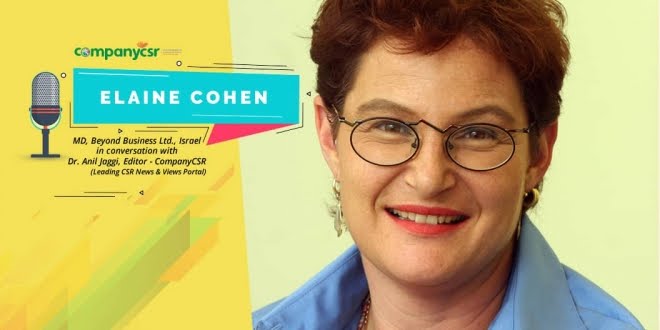
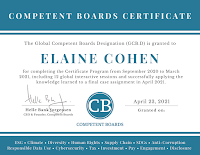


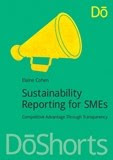
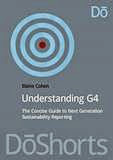
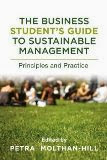
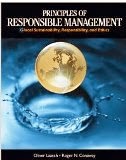
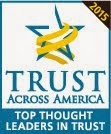










No comments:
Post a Comment